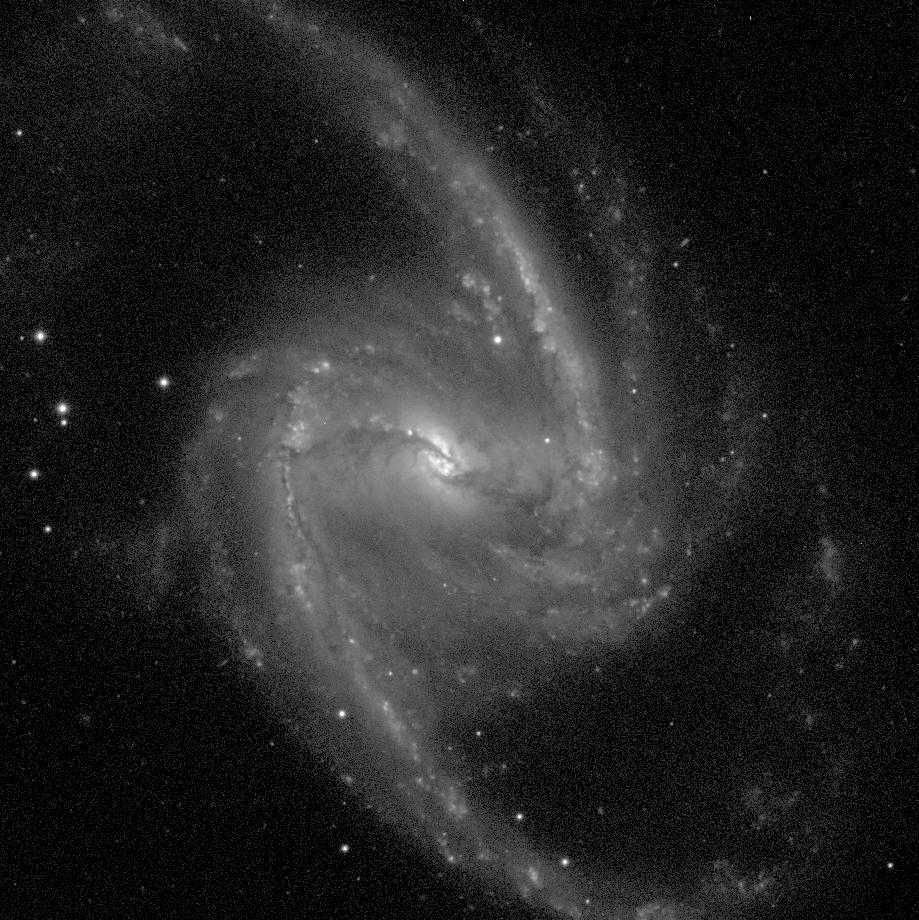

De Vaucouleurs Atlas Type: SB(s)bc
Filter: B
Telescope: LCO 2.5-m
North up , East left
Field Dimensions: 9.0 x 9.0 arcminutes
RC3 Type: SB(s)b
RSA Type: SBbc(s)I
Surface Brightness Range Displayed: 18.0-26.0 mag per square arcsec
Absolute Blue Magnitude: -21.5
Elmegreen Spiral Arm Class: AC12
De Vaucouleurs Atlas Description:
NGC 1365 is perhaps the most magnificent barred spiral in the sky. The bar is strong but is partly hidden by strong leading dust lanes which cut directly into the nuclear region. Several short, curved dust arcs break from the main dust lanes nearly perpendicularly, and show some symmetry. We favor the Sbc classification because of the extreme openness of the main arms, their light patchiness, and the rather small bulge. Particularly interesting is the considerable amount of light surrounding the bar. This area appears to include spiral structure that is unrelated to the two main arms, but which contributes to a slight doubling of those arms around the bar ends. The nuclear region is ``spotty" and clearly includes recent formation. The nucleus is active, and is classified as a Seyfert 1 .5 type.
Being one of the nearest barred spirals , NGC 1365 has been the subject of many detailed studies. Kristen et al. (1997) use HST data to show that the central area includes super star clusters , massive compact clusters having absolute magnitudes MB ~ -14. These compact sources lie in a nuclear ring that is partly obscured in the blue light image. Lindblad, Lindblad, and Athanassoula (1996) use hydrodynamical models to interpret the kinematics and star formation properties of NGC 1365 . They find that the bar ends near the inner 4:1 resonance, and that the enhanced star formation along the inner parts of the two main arms are due to collisions between gas clouds moving on elliptical orbits inside the bar with gas clouds moving on more circular orbits outside the bar. They also found that the bar alone could not generate the extremely bright arms, and instead that the arms are massive, self-gravitating features.